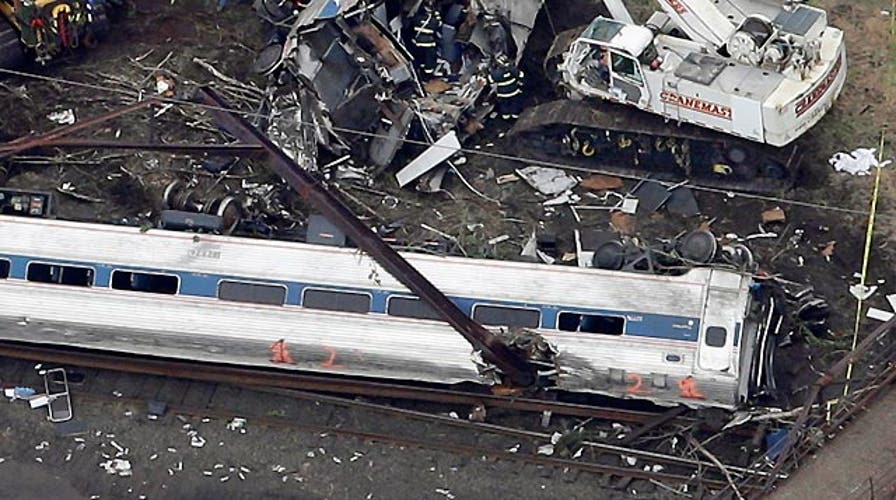Amtrak train crash sparks infrastructure debate
Reaction from the 'Special Report' All-Star panel
The Federal Railroad Administration has reportedly ordered Amtrak to modify its signal system to protect against speeding around sharp curves along the Northeast Corridor, including the one where a train derailed Tuesday night killing eight people.
The Wall Street Journal , citing a person familiar with the matter, reports Amtrak will change its current automatic braking system to protect against speeding trains at the curve where Northeast Regional Train 188 in Philadelphia derailed
Amtrak’s circuits trigger an alarm in the cab of a train that exceeds speed limits and can cut power to those who do not slow down to prevent a derailment or crash. Similar circuits were protecting southbound trains at the Frankford Junction, but not northbound trains. Train 188 was headed north from Philadelphia to New York.
National Transportation Safety Board member Robert Sumwalt said Thursday that such a circuit would have prevented the Amtrak derailment Tuesday.
The paper, citing a person familiar with the situation, reports the railroad is planning to canvass its territory and install the same type of protective circuit at any similar sharp curves along the Northeast Corridor that are not protected against over-speed incidents.
Among the tracks that need to be fixed are the sharp approaches to the Amtrak station in Wilmington, Delaware, the approach to a rail bridge at Pelham Bay in the Bronx section of New York City and a few S-curves in Baltimore, a person familiar to Amtrak’s infrastructure told the journal.
All potential vulnerable systems are all in parts of the Northeast Corridor not covered by a more advanced type of signaling system, known as positive train control, which Amtrak has already installed on parts of its territory. Federal law requires all U.S. passenger railroads and major freight railroads to have positive train control systems in operation by the end of 2015. However, few are expected to make that deadline.
Amtrak President and Chief Executive Joseph Boardman has vowed to complete the positive train control system on time.


